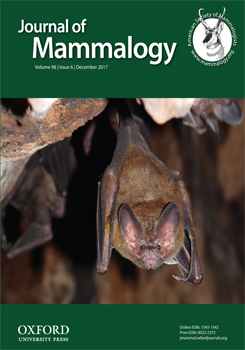Niche segregation has been proposed as the driving factor facilitating species coexistence by reducing interspecific competition. Nonetheless, although niche segregation has been widely studied, few studies have examined it in disturbed environments. Because of their dependence on mature forests, arboreal squirrels are model organisms for studying how sympatric species coexist in disturbed habitats. We examined niche segregation between Sciurus aureogaster and S. oculatus in an oak-pine forest of Pinal de Amoles, Querétaro, Mexico, disturbed by insect infestation and deforestation. We were interested in the degree of niche overlap in activity patterns, space and tree use, and feeding behavior. Because S. aureogaster has a greater geographic distribution and occurs in a wider range of habitats, we predicted that it would show wider niche values, and would be more tolerant to disturbance compared to S. oculatus. We also predicted that nests would be situated in areas with low deforestation pressure. We searched for squirrels, nests, and tree stumps while walking along dirt roads and trails, and through the dense part of the forest. Levin's measure of niche breadth and Pianka's measure of niche overlap were used to evaluate how both species segregate across resource dimensions. Number of stumps was used to evaluate deforestation pressure around nests and squirrels within 30-m-radius circles. S. aureogaster showed slightly narrower niche breath values in 5 out of 7 dimensions compared to S. oculatus. We found high niche overlap values in all dimensions examined. Both squirrel species strongly relied on pine (Pinus) trees for feeding, traveling, and nesting. S. aureogaster and S. oculatus were observed in areas with similar disturbance, and nests were situated in areas with medium deforestation pressure. Pine trees were mostly logged illegally and for forest sanitation, posing a serious threat to the persistence of arboreal squirrels within the study area.
How to translate text using browser tools
14 October 2017
Niche segregation between Sciurus aureogaster and S. oculatus in a disturbed forest in central Mexico
Nicolás Ramos-Lara,
Carlos A. López-González
ACCESS THE FULL ARTICLE

Journal of Mammalogy
Vol. 98 • No. 6
December 2017
Vol. 98 • No. 6
December 2017




